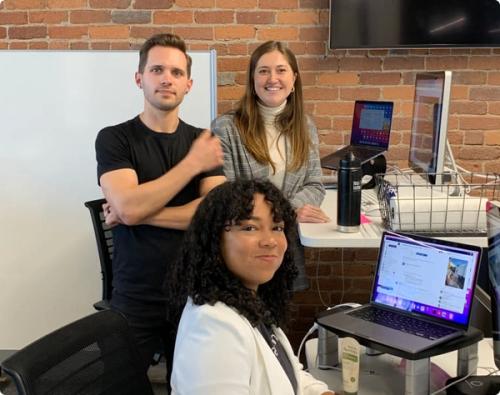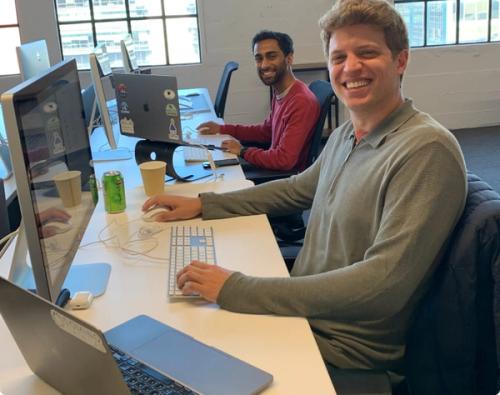How do you describe what Domino Data Lab does?
The pitch I tend to make to technical people is that we do for data scientists what GitHub does for software developers. Like GitHub, we function as a system of record where you can collaborate with your coworkers, plan and track your work, and store your code. But data science and machine learning products have different life cycles than software development, so when companies try and make GitHub work for data scientists, there are too many gaps.
Those gaps get filled by other tools, and you end up with an increasingly sprawling attempt to adapt all of these different tools to data science. And you’re dealing with constantly changing data conditions—you have to retrain, ensure your algorithm and your training data understand the data environment that you’re in, and then constantly monitor and update these things. Domino provides a dedicated machine learning platform with all those features—everything for data scientists and machine learning developers is in one place.
Tell us about your role. What do you do and who do you work with?
As a solutions architect, I get to do a lot of different types of work, which makes my role really exciting. Because Domino is such a flexible platform, we aim to integrate with just about every other possible tool a customer of ours would use today. Every customer has a slightly different profile, especially our big customers. Since they want to accomplish so much, the whole map of what Domino looks like for those customers is complex and unique. So, someone like me comes in to help navigate how we can make Domino work for them. What do we need to do to connect to everything? How do we need to plan, architect, implement, and then train users on how to get everything done in Domino that the customer wants to do?
I would say more than half of the job is figuring things out yourself, understanding at a deep level the requirements that the customer has. You want to understand not only what’s possible with our technology, but because we’re so open in the technology ecosystem around us, we can also consider what’s open source. What can be done to make something possible? What’s available from various clouds?
I also work internally with a community of experts in various domains. For example, we have a relationship with Domino’s Engineering team, and we’ll occasionally ask them for help. We’ll go in and deep dive on how certain components of Domino work, where they’re extensible, and what we can do to build on top of them.
Tell us about how you ended up in this role.
Before I came to Domino, I was a technical writer at a prestigious media company and a large tech company. In both of those jobs, I had a very narrowly defined role where I didn’t have much control over most of the process. I was just a cog in a machine.
Then I was hired at Domino as a technical writer—the first and only one at the time—and I was given complete authority over our documentation. I was free to make decisions and given ownership to write things the way I thought they needed to be written. Nobody really blocked anything. I was trusted to deliver what I thought I needed to, and over the course of a couple of years, I rebuilt the whole system—twice. It was a lot of fun.
The transition into my current role grew out of my compulsive desire to have a mastery of the technologies I was writing about. We needed someone to write an administrator’s guide that would cover how to install, configure, and integrate our system so customers could set it up themselves. In the process, I became one of the people at the company who understood this type of work best.
Inevitably, customers started to have questions about how to do things like integrations and customizations. They needed the kind of solutions architecture work we do now, so I volunteered to start doing it. After several months, my current boss said, “We should give you this title and create a new team.”
No one had that title before at Domino, and now, in addition to me, there is a small but growing team of solutions architects.
How does your work make an impact in the world?
There has always been a huge amount of meaningful work to do at Domino; I have always felt that, at any moment, the stuff in front of me was of really high value.
One of our most engaged customers is a major pharmaceutical company who did their research on Domino as part of the development for their COVID vaccine. We’ve been able to support them so successfully because they’ve really leaned into the ways Domino can change the way their organization works. Prior to Domino, they had a lot of researchers doing a ton of work across fields. They had many small teams setting up their own way of working, all using different tools. Some of them were effective, but no one knew what anyone else was doing—it was all scattered.
Domino unified all the work they were doing, and we also provided a sort of velocity, a way to just get working without going through the onboarding and decision-making processes the varying teams previously used. A new researcher might want to launch a thousand virtual machines to perform a thousand permutations for an experiment. Before, it would’ve taken weeks to set up the experiment—deciding how to do it, what framework to use, how best to get results, where all the data should go. With Domino, you can do all that in a few clicks.
This particular pharmaceutical company is constantly pushing the limits of what our software is capable of managing in terms of the scale of the work they want to do, the number of users they have, and how much work they’re doing. These are fun challenges for us that my team gets to help solve. We work really closely with the customer to keep an eye on the health of their software, their cluster, and to make sure it’s all running well.
What’s challenging about your work?
When a cutting-edge technology company is doing business with the biggest enterprises in the world, there are bound to be some challenges. For example, a new research team within a large, established company might want to use Domino, but they have to go through a formal procurement process, and the IT department might not understand why we’re architected differently than they expect, or they might have very specific technical requirements.
To that end, we work closely with our Sales team, which includes both non-technical account management sales as well as technical sales engineers. It’s not uncommon for a sales engineer to bring us into a pre-sales engagement to help persuade customer IT or come up with creative solutions to customer requirements we don’t strictly meet. We get to be technical leaders and help executives understand Domino’s value and the future of the industry.
What are some of the skills and expertise needed for a solutions architect at domino?
Aside from familiarity with things such as Kubernetes, cloud infrastructure, cloud-native thinking, and cloud networking, by far the biggest skill you need is to be a fast learner. Every month I talk to a new customer or prospect who has a project that includes something I’ve never worked with before. So it’s crucial to have the ability to seek out and understand new technology information on your own really quickly.
One of the fun and exciting aspects about the job is that, because there are a lot of different types of work, there’s room for a lot of different personalities on the team. Some of our projects involve writing more code. Some involve writing planning documents and doing project management. And some involve more sales and persuasion. There’s even room for someone who is technical but wants to be customer-facing. At least one of these aspects should be a strength for you, but you have the opportunity to do them all.
What’s most exciting about where domino is right now and where it’s going?
Domino is in a cool transitional moment. We’re growing into a mid-sized company, but we haven’t lost our startup feel. We still have all of the ownership, freedom, and mission-oriented dynamism that was here when I first started.
I’ve never been at a company in this phase before, and I think I’m in the position to have a pretty big impact on how things go. It’s going to be a magical few years. Someday Domino will be a big company, and we’ll have the benefits and the pains that come with that. But we’re not there yet. We’re on the cusp of making that transition, which I think is exciting.




